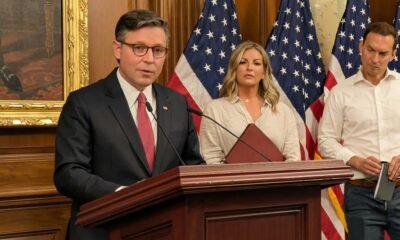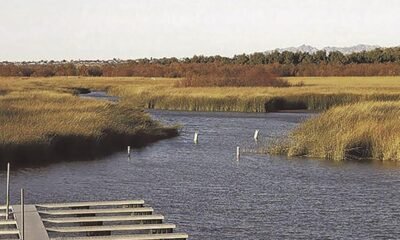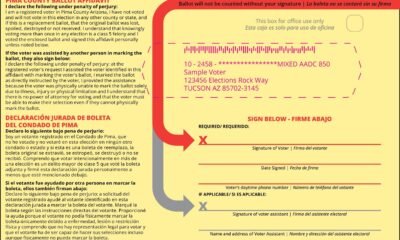Fashion
New Bill Targets Voting Centers, Democrats Warn of Minority and Rural Disenfranchisement

Key Points:
Voting centers and early voting locations for primary and general elections would be banned under the bill.
The bill would also limit an election precinct to a maximum of 1,000 registered voters.
Democrats and other opponents have said the law would be physically impossible to implement.
The Arizona Legislature approved a bill on April 29 that could significantly reshape how elections are conducted in the state. House Bill 2017 would prohibit counties from establishing voting centers and early voting locations during primary and general elections, while also restricting precincts to no more than 1,000 registered voters.
Additionally, an identical measure, House Concurrent Resolution 2002, is progressing through the Legislature and awaits a hearing in the Senate Rules Committee. Proponents argue that limiting voting centers is necessary for election integrity.
Rep. Rachel Keshel, R-Tucson, the bill’s sponsor, claims that voting centers have contributed to chaos during elections, delaying vote counts and undermining public confidence in the electoral process. Previously, she attempted to pass a similar bill that did not succeed.
“When I started voting many years ago, I went to my local church or school in my precinct,” Keshel stated during a hearing. She emphasized the importance of local settings for fostering community during elections, noting that results were often reported faster in such environments.
Keshel capped the precincts at 1,000 voters based on feedback from election workers, arguing that the current model complicates ballot management. However, opponents contend that this measure serves as another form of voter suppression. They assert that the bill’s implementation would require an unrealistic increase in polling locations and staffing.
A fiscal note from the Joint Legislative Budget Committee estimates that the state would need approximately 3,957 new voting locations and over 27,000 additional poll workers. The anticipated costs for counties would amount to $10.8 million on Election Day, along with one-time equipment expenses reaching $31.5 million.
Under this proposal, Maricopa County would require 2,457 new locations and more than 17,000 additional workers, while Pima County would need 574 locations and 4,200 additional poll workers. Pinal County would have to add 206 locations and 1,500 workers.
Eight counties currently utilize voting centers, including Cochise, La Paz, and Maricopa. Another five counties employ a hybrid system incorporating both precincts and voting centers. Sen. Analise Ortiz, D-Phoenix, raised concerns about the feasibility of finding sufficient sites and staffing under the new law, arguing that this could disenfranchise voters, particularly in rural areas.
“Voting centers allow voters flexibility,” Ortiz commented. “Eliminating them will make voting more difficult, especially for working Arizonans and minority communities.”
Sen. Lauren Kuby, D-Tempe, expressed doubt that the bill would expedite voting results and warned of potential technological complications. “This will likely be vetoed by the governor,” she said. “I do not understand the rationale for pushing this forward.”
In defense of the bill, Sen. Mark Finchem, R-Prescott, referenced other countries that utilize strict precinct voting. He criticized the narrative that implementation difficulties would warrant inaction, insisting it ultimately reflects a lack of political will.


















